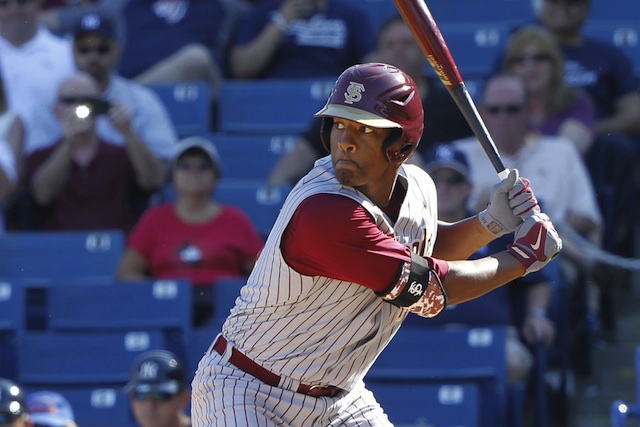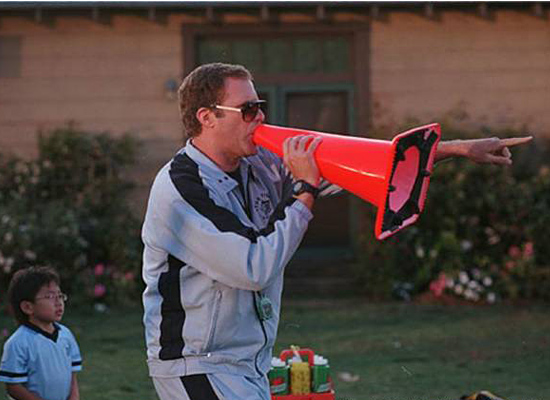As a boy, he sneaked away from an abusive high school coach to gulp water from a polluted river. He saw some of his teammates, desperate with thirst, drink from a puddle, and he heard of others who would do so from a toilet.
Now, 20 years on, Hiroki Kuroda shook his head and actually laughed a little when recalling — and trying to explain — the hardships he endured as a boy trying to follow his father’s footsteps and play professional baseball in Japan.
“It was a generation,” Kuroda said through an interpreter, “when coaches believed you should not drink water.”
Born in 1975, Kuroda is one of the last of a cohort of Japanese players who grew up in a culture in which staggeringly long work days and severe punishment were normal, and in which older players could haze younger ones with impunity.
Summer practices in the heat and humidity of Osaka lasted from 6 a.m. until after 9 p.m. Kuroda was hit with bats and forced to kneel barelegged on hot pavement for hours.
“Many players would faint in practice,” Kuroda said with the assistance of his interpreter, Kenji Nimura. “I did go to the river and drink. It was not the cleanest river, either. I would like to believe it was clean, but it was not a beautiful river.
“In order to play,” he added, “you had to survive. We were trained to build an immune system so that we could survive and play.”
Although never considered a top prospect, particularly by his high school and college coaches, Kuroda has come to be one of the most successful Japanese-born pitchers in baseball. His career earned run average of 3.41 is the lowest of any Japanese pitcher with more than 12 major league starts, and that includes the more-heralded Hideo Nomo, Daisuke Matsuzaka and Yu Darvish.
On Friday, Kuroda, with a 3.17 E.R.A. and 8-7 record this season, will take the mound against the Red Sox at Fenway Park. The Yankees, hit with injuries, have effectively asked Kuroda to elevate his game to compensate for the suddenly absent starters Andy Pettitte and C. C. Sabathia. He seems, perhaps not surprisingly given his life story, undaunted.
Jokingly asked if he could throw 200 pitches in a game if asked, Kuroda did not exactly dismiss the notion.
“I am a human being, so of course I get tired,” he said. “But if someone asks me, I would probably do it because that is how I was taught. Everything happens for a reason, and maybe it helped me to get here now.”
Kuroda, reflecting for another moment on his ordeals as a child, then added, “But if none of it happened, I would have enjoyed baseball a lot more.”
One day in the summer of 1990, when Kuroda was 15 and playing summer baseball for his select high school, Uenomiya High, he had a bad outing, the latest in a string of them. Controlling the location of his pitches was a persistent problem, and even when he could throw strikes, opponents hit them hard, and to all fields.
Before long, Kuroda’s manager approached him and another offending teammate, a boy a year older, and issued them the dreaded order: Run.
As usual, it was an open-ended command, and every player, particularly the struggling ones like the teenage Kuroda, knew the meaning: go to the outfield, and run from foul pole to foul pole — the longest part of any baseball field — without water.
Kuroda changed out of his uniform and began a four-day ordeal that still haunts him and still fuels his desire to perform well — and not make mistakes.
The story, as he tells it, sounds implausible. But Kuroda, over the course of five interview sessions, told it again and again, and insisted it was so.
Under orders, he ran from 6 a.m. until 9 or 10 p.m., depending on when the coach went to bed. Obviously, he could not jog for 15 straight hours, but he had to do his best to make it look that way. When his coach, known as the kantoku, was not watching, he would walk.
When the kantoku went to his office for lunch, Kuroda said, his teammates left water or a rice ball for him in the woods.
“That water was the greatest tasting thing I have ever had,” he said, “better than any five-star restaurant.”
At night, when the kantoku had retreated for the evening, Kuroda could at last stop running and would return to the dormitory. But he was not allowed to bathe.
Bobby Valentine, the Boston Red Sox’ manager, spent seven seasons managing in Japan, including one in 1995, and was astonished by the work and routines that so many players were accustomed to. When Kuroda’s punishment was explained to him, he was not remotely surprised.
“How come they let him stop at 10?” Valentine said. “What, did he have a particularly liberal coach?”
After four days and nights of this treatment, the parents of Kuroda’s teammate intervened more directly. They took the boys back to their house, gave them water and food, and bathed them. They called Kuroda’s mother and told her the situation.
“She said to send me back,” Kuroda said, laughing. “At that point, I knew I had an enemy in my own house.”
Kuroda said his father, a onetime outfielder for the Nankai Hawks who opened a sporting goods store after retiring, believed that his son had made a commitment when he went to that school to play baseball, and that that meant obeying the coach.
But his mother, if firm, seemed more open to reason — at least insofar as she allowed him to spend the night with his friend and return to the coach and the team the next morning.
In the United States, such treatment might be considered criminal. And today in Japan, lawsuits from parents have drastically changed what is considered acceptable.
“I know there are cultural differences across international boundaries,” said Jim Thompson, the founder and chief executive of Positive Coaching Alliance, an organization dedicated to promoting a positive method of coaching. “But it’s hard to come to any other conclusion but that it’s child abuse and his coach was a bully.”
That was not the only time Kuroda had to run the poles, just the most extreme. Even without that kind of punishment, life for Japanese high school baseball players was demanding. On most days they would wake up at 5 a.m., go to practices and school, and get home at 10 or 11 p.m.
“Attending class was the only time I was able to relax,” Kuroda said, “and sometimes sleep.”
Kuroda’s first formal introduction to the old-school culture of Japanese baseball came when he was in first grade. After he had made a mistake, the coach administered a punishment known as ketsu batto. He got whacked with a bat (batto) on his backside (ketsu).
“Starting in elementary school, it was like the military almost,” he said. “If you did something wrong in a game, you’ll get a certain number of spanks with a bat. The next day, you couldn’t even sit in a chair in school.
“When I gave up a hit, ketsu batto. That was my first experience in baseball with a team. In first grade to fourth grade.”
Everything changed in fifth grade, when his father, Kazuhiro Kuroda, took over and began coaching his team. For the first time, Kuroda saw the joy in baseball, and he longed for each day that he could play for his father.
“Reflecting upon my baseball life, that was the time that I had the most fun playing baseball,” he said. “I was able to experience baseball without discipline. It was the pure joy of playing baseball. But when I got back to high school, it was back to the torture.”
The coaches were not the only ones meting out punishment in high school. Hazing was a consistent threat, too. Kuroda declined to reveal some of the tactics used against him, calling them too grotesque. But he recounted how older players would make the younger ones kneel with their bare legs on hot pavement and then hit them.
This was a practice that was repeated by upperclassmen when he got to college. Unlike Matsuzaka, Darvish and other stars, like Koji Uehara, Kuroda was not good enough to be drafted out of high school. So he played for Senshu University.
As Kuroda recalls it, scouts never saw him pitch because he was always running or pitching in mop-up situations and practice games.
At Senshu, players lived in four-man dorm rooms, which Kuroda hated. Freshmen had to wake up long before their roommates and do the other boys’ laundry. By the time the older boys awoke, their clothes had to be folded and stacked — in the order they would put them on — and their socks had to be washed by hand.
“Freshmen were basically slaves,” Kuroda said. If they did not live up to their duties, they would have to endure the kneeling treatment again. This time it was on the hot roof of the dorms with a beautiful view taunting them.
“After a while,” Kuroda said, “the view was blurry and distorted. Your legs would go numb, and you had to crawl back to your room.”
And there was always running. When the running was not under a hot sun, it might be in the rain. But the coaches told the players not to worry. Their bones, they were told, would stay dry.
Because of his strong arm, Kuroda was drafted by the Hiroshima Carp in 1996 and made his debut in 1997. Life was much easier in the pros. They worked hard, but the running was less severe, and there was no such punitive conditioning. He spent nine years with the Carp before joining the Los Angeles Dodgers in 2008, where he continued to thrive.
Although Kuroda would never recommend the treatment he received for anyone else, he struggles to put it into proper perspective. It almost drove him out of the game in high school, but it may have ultimately helped him surpass all expectations and become a good major league pitcher.
Kuroda is considered among the hardest-working players in baseball. He still runs, but instead of doing endless poles, he does what Dana Cavalea, the Yankees’ strength and conditioning coordinator, prescribes.
Kuroda accepts his past ordeals as part of the fabric of his life and character.
“It was all so ingrained in me that I still have a fear of giving up hits and runs,” he said while sitting in the Yankee Stadium dugout before a game last week.
Then, fiddling with a bottle of clean water, Kuroda asked through Nimura if the interview was over. He had to go run.
Source: http://www.nytimes.com/2012/07/06/sports/baseball/in-japan-yankees-hiroki-kuroda-was-molded-by-pain.html?pagewanted=all&_r=0












